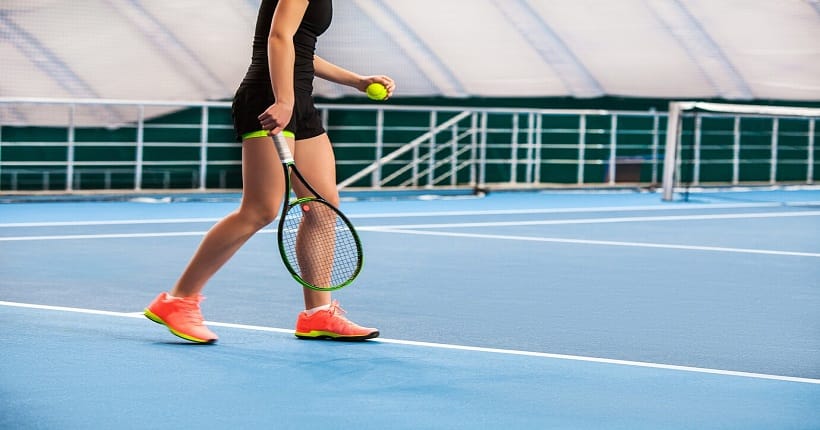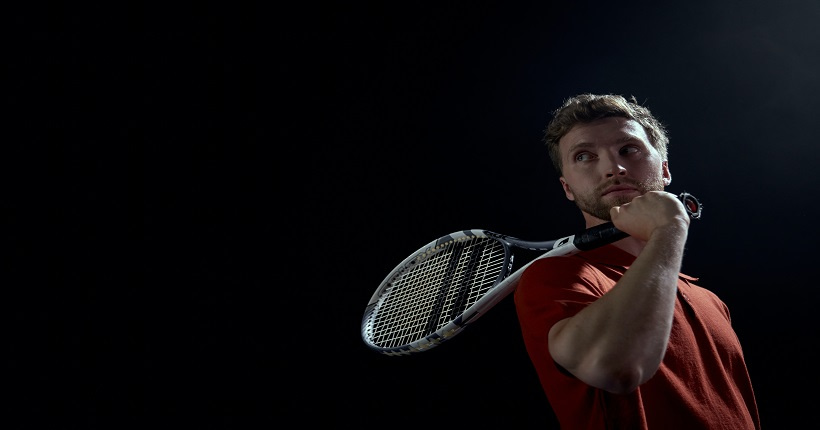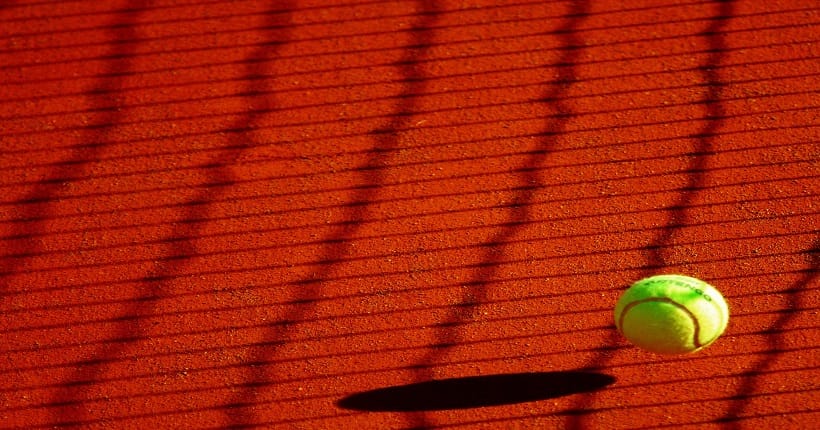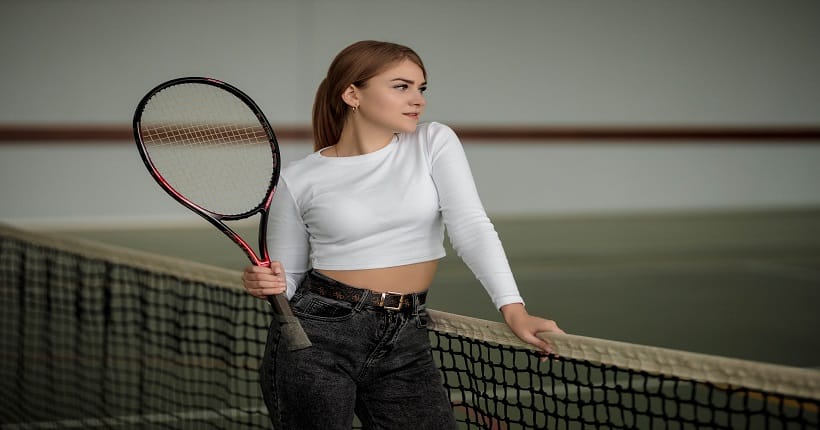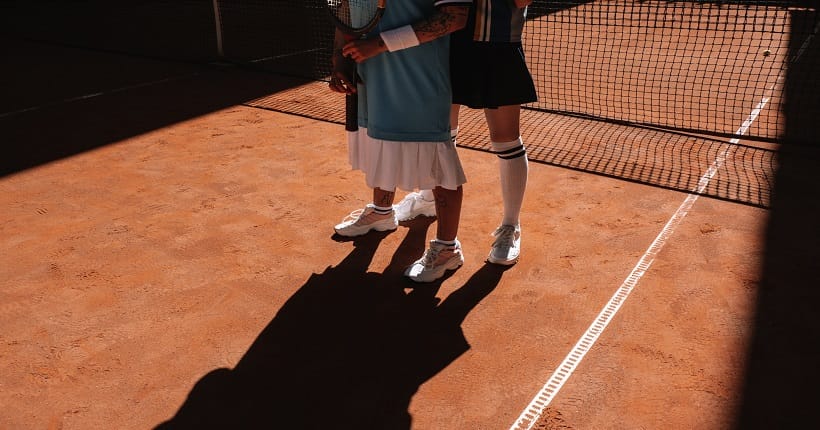How To Choose The Right Tennis Racket For Your 11 Year Old?
To choose the right tennis racket for your 11-year-old, consider their age, size, skill level, and playing style.
Factors To Consider When Selecting A Tennis Racket
Choosing the right tennis racket for your 11-year-old can significantly impact their performance on the court. Several factors need to be taken into consideration to ensure that the racket suits their age, skill level, physical development, and playing style. This article explores the key factors that should be examined when selecting a tennis racket for your child.
Player’s Age and Physical Development
One of the primary considerations when choosing a tennis racket for an 11-year-old is their age and physical development. Younger players typically have smaller and weaker grips, making it crucial to select a racket that is appropriate for their size and strength. A racket that is too heavy or too large may hinder their ability to swing accurately and prevent them from developing proper technique.
Skill Level and Playing Style
An essential aspect to consider is your child’s skill level and playing style. If they are just starting out, it is advisable to choose a lightweight and maneuverable racket that offers a larger sweet spot, allowing for more forgiving shots. Alternatively, advanced players may require a racket that provides greater control and power, catering to their specific playing style.
Racket Weight and Balance
The weight and balance of the racket play a significant role in determining how it feels in your child’s hand and influences their swing. A lighter racket can be easier to handle and maneuver, particularly for younger players. However, more advanced players may benefit from a slightly heavier racket to generate additional power. Additionally, the balance of the racket, whether it is head-heavy or head-light, impacts the swing and control.
Grip Size and Comfort
The grip size of the tennis racket is crucial for comfort and control. It is important to select a grip size that is appropriate for your child’s hand size and allows them to hold the racket comfortably. A grip that is too small can cause discomfort and affect their ability to maintain a firm hold, while a grip that is too large can lead to loss of control and increased strain on the arm.
Racket Length and Head Size
The length and head size of the tennis racket are important factors to consider. The length of the racket should be proportional to your child’s height, ensuring that they can comfortably maneuver it during a match. The head size refers to the racket’s hitting area and has a direct impact on power and forgiveness. A larger head size provides a larger sweet spot, while a smaller head size offers increased control.
String Tension and Material
The string tension and material can greatly affect the performance of the racket. Higher string tension provides greater control but can reduce power, while lower tension offers more power but decreases control. The material of the strings, such as synthetic or natural gut, influences power, durability, and feel. Consider your child’s skill level and playing style when selecting the appropriate string tension and material for their racket.
Budget Considerations
Lastly, budget considerations play a role in your decision-making process. Tennis rackets vary in price range, depending on their features and quality. It is important to set a budget that aligns with your financial capacity while also ensuring that the selected racket meets your child’s specific needs.
By taking into account the player’s age and physical development, skill level and playing style, racket weight and balance, grip size and comfort, racket length and head size, string tension and material, as well as budget considerations, you can make an informed decision when selecting the right tennis racket for your 11-year-old. Providing your child with a racket that suits their individual needs will enhance their enjoyment of the sport and facilitate their development as a tennis player.
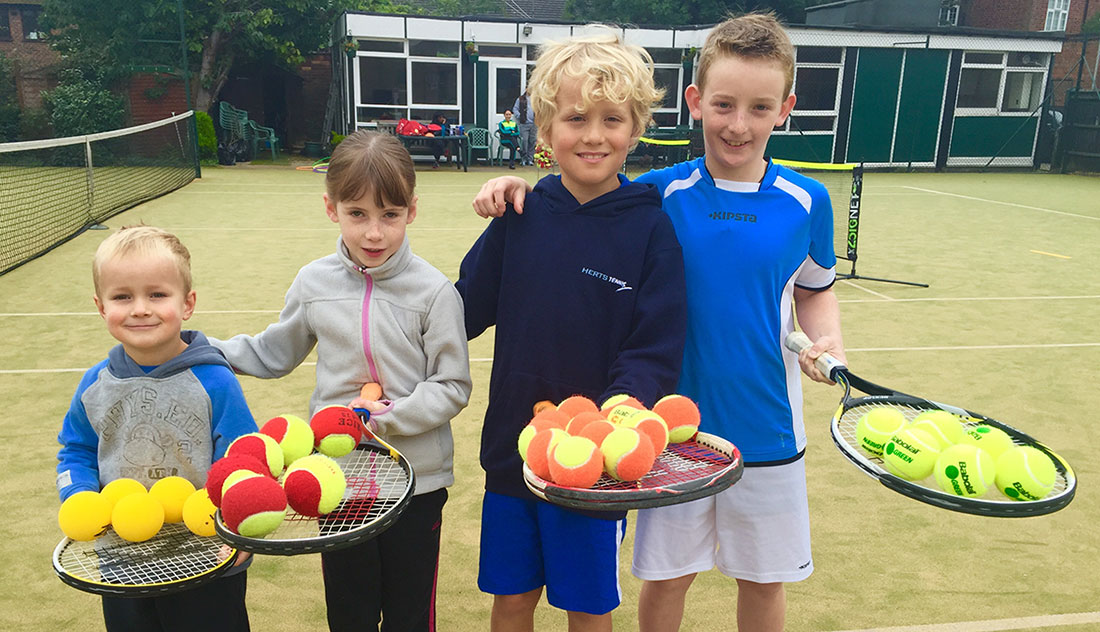
Credit: www.topshottennis.net
Evaluating Your Child’S Skill Level And Playing Style
Assessing your child’s technique and coordination
One of the most important factors to consider when choosing a tennis racket for your 11-year-old is their technique and coordination. Evaluating their skill level and understanding their playing style can help you make an informed decision that enhances their performance on the court.
Begin by assessing your child’s technique. Observe their grip, swing, and ball contact to determine if they have a solid foundation in the fundamental skills of tennis. Pay attention to their footwork, body positioning, and ability to generate power and control in their shots.
It’s also crucial to evaluate their coordination. Tennis requires fast movements and quick reflexes, so assessing your child’s agility, balance, and hand-eye coordination will help you choose a racket that matches their physical abilities. Consider their ability to move fluidly across the court, track the ball, and react efficiently to different shots.
Determining your child’s playing style
Every tennis player has a unique playing style, and it’s essential to determine your child’s style to choose the right racket. Are they an aggressive baseliner who relies on powerful groundstrokes? Or are they more of a serve-and-volley player who prefers to attack the net?
Observe your child’s gameplay to identify their strengths and weaknesses. Do they excel in consistent and controlled rallies, or do they thrive in aggressive shot-making? Analyzing their playing style will help you understand the type of racket that suits their game.
Consider their shot selection, shot variety, and court coverage to gain insights into their playing style. This information will guide you in selecting a racket that complements their natural strengths and improves their weaknesses.
Analyzing strengths and weaknesses
Once you have assessed your child’s technique, coordination, and playing style, it’s time to analyze their strengths and weaknesses. This evaluation will help you find a racket that maximizes their strengths while minimizing their weaknesses.
Make a list of your child’s strengths, such as power, control, spin, or consistency. Identify their areas of improvement, such as volleys, serves, or backhand shots. This analysis will assist you in determining the key features you should look for in a racket.
Consider the weight, balance, and string pattern of the racket to align with your child’s strengths and weaknesses. For example, if your child lacks power in their shots, a racket with a larger head size and more flexible frame can provide that extra boost. On the other hand, if they struggle with control, a smaller head size and tighter string pattern may offer more precision.
Remember, choosing the right tennis racket for your 11-year-old is a personalized process that requires careful evaluation of their skill level and playing style. By assessing their technique, determining their playing style, and analyzing their strengths and weaknesses, you can make an informed decision that enhances their overall performance and enjoyment on the court.
Determining The Appropriate Racket Specifications
When it comes to choosing the right tennis racket for your 11-year-old, it’s crucial to consider the racket specifications that would suit them best. Several factors come into play, including weight, balance, grip size, length, head size, and string tension. Taking into account these specifications will ensure that your child can play with a racket that complements their skills and enhances their performance on the court.
Selecting the right weight and balance
One of the first things to consider when choosing a suitable tennis racket for your 11-year-old is its weight and balance. A lightweight racket is generally recommended for younger players as it allows for better maneuverability and control. Ideally, a racket with a weight between 240 and 270 grams would be appropriate for an 11-year-old. The balance of the racket refers to how the weight is distributed, with options available in head-heavy, head-light, or evenly-balanced designs. It’s advisable to opt for a slightly head-light racket as it offers easier handling and greater control over the shots.
Choosing the optimal grip size
The grip size of the racket is another crucial factor to consider. A grip that is too large or too small can cause discomfort and hinder your child’s ability to play their best game. To determine the correct grip size, measure the distance between the middle crease of your child’s palm to the tip of their ring finger. This measurement will correspond to a grip size, typically ranging from 4 inches to 4 5/8 inches. A proper grip size will allow your child to have a secure hold on the racket, preventing slippage and aiding in control and shot execution.
Considering racket length and head size
The length of the racket is another important consideration. For an 11-year-old, a racket with a length of 25 to 26 inches would be suitable. This length allows for a balance between maneuverability and power. A shorter racket may provide greater control, while a longer one may offer more power but might be harder to handle for a younger player. Additionally, it’s essential to consider the head size of the racket. A larger head size, typically between 100 to 110 square inches, provides a larger sweet spot, which can be advantageous for young players who may not consistently hit the ball in the center of the racket. A larger sweet spot offers forgiveness and increases the chances of a successful shot.
Different string tensions and materials
The string tension and materials used in the racket also play a significant role in determining its performance. The string tension refers to the level of tightness in the strings and can affect the power and control of the shots. Lower string tension provides more power but sacrifices some control, while higher string tension offers better control at the cost of power. As for string materials, synthetic guts are commonly used for younger players as they provide a good balance of durability and playability. Natural gut strings are a premium option but may not be necessary for an 11-year-old.
By considering these racket specifications, you can ensure that your 11-year-old has the best possible tennis racket that suits their needs and helps them develop their skills on the court. Remember, it’s crucial to let your child try out different rackets and seek guidance from a coach or tennis professional to make an informed decision.
Exploring Racket Technologies And Features
Choosing the right tennis racket for your 11-year-old can be an overwhelming task, especially with the plethora of options available in the market. To help you make an informed decision, it’s important to explore the different racket technologies and features that are specifically designed to enhance performance and optimize your child’s gameplay. In this section, we’ll examine racket construction materials and technology, identify features for enhanced performance, and consider customization options.
Examining racket construction materials and technology
When it comes to selecting a tennis racket for your 11-year-old, it’s crucial to consider the construction materials and technology used. Different materials can significantly impact the racket’s performance, weight, and durability. Here are some popular options to consider:
| Racket Material | Description |
|---|---|
| Graphite | A lightweight and stiff material that offers excellent power and control |
| Aluminum | Provides a good balance between power and maneuverability, ideal for younger players |
| Composite | A combination of materials, like graphite and fiberglass, to provide a blend of power and control |
Identifying features for enhanced performance
To maximize your child’s potential on the tennis court, it’s important to look for specific features that can enhance their performance. These features can vary based on individual preferences and playing style. Here are some key features to consider:
- Head size: A larger head size provides a larger sweet spot and more forgiveness on off-center hits
- String pattern: A denser string pattern offers more control, while a more open pattern provides enhanced spin potential
- Weight and balance: A lighter racket is easier to maneuver, while a heavier racket provides more power
- Grip size: Choosing the right grip size ensures a comfortable hold and prevents unnecessary strain on the hand and arm
Considering customization options
Every young tennis player has specific requirements and preferences when it comes to their racket. Customization options allow you to tailor the racket to your child’s unique needs. Here are some customization options to consider:
- Adding lead tape: Adjusting the weight and balance of the racket by adding lead tape to specific areas
- Changing the grip: If the grip size is not suitable, it can be easily modified with overgrips or replacement grips
- String selection: Experimenting with different types of strings can affect the overall feel and performance of the racket
By exploring the various racket technologies and features, you can make an informed decision and choose the perfect tennis racket that will help your 11-year-old excel on the court. Remember to consider the materials used, identify features for enhanced performance, and keep customization options in mind.
Physical Comfort And Safety Considerations
When it comes to choosing the right tennis racket for your 11-year-old, physical comfort and safety should be at the top of your priority list. Ensuring that your child is comfortable and safe while playing tennis is crucial for their enjoyment of the sport and for preventing injuries. In this section, we will dive into three important physical comfort and safety considerations: grip size, racket weight and balance, and string tension.
Ensuring proper grip size for comfort and injury prevention
Proper grip size is essential for both comfort and injury prevention. A grip that is too large or too small can cause discomfort and lead to potential injuries such as blisters or tendonitis. To determine the right grip size for your 11-year-old, you can follow a simple measurement technique. Measure the distance from the middle of your child’s palm to the tip of their ring finger. Once you have this measurement, refer to a grip size chart to find the appropriate size. It is recommended to test out different grip sizes in person before making a final decision, as personal preference can also play a role in comfort.
Minimizing arm strain with appropriate racket weight and balance
The weight and balance of the tennis racket are crucial factors in minimizing arm strain for young players. A racket that is too heavy can put excessive strain on the arm, leading to fatigue or even injury. On the other hand, a racket that is too light may lack stability and control. Finding the right balance between weight and balance is key. As a general rule, younger players should opt for lighter rackets with a more head-heavy balance. This combination allows for easier swing and maneuverability, reducing the strain on the arm while providing sufficient power and control.
The impact of string tension on player comfort
The string tension of a tennis racket also plays a significant role in player comfort. Higher string tension can provide more control and precision but may sacrifice power and comfort. Lower string tension, on the other hand, offers more power and comfort but may result in reduced control. For young players, it is generally recommended to start with a lower string tension to allow for a larger sweet spot, which increases forgiveness on off-center shots. As your child progresses and develops more control, you can experiment with higher tension levels to find the right balance between control and comfort.
Ensuring A Proper Fit And Trial Period
Choosing the right tennis racket for your 11-year-old is crucial in their development as a tennis player. While factors such as weight, length, and string tension all play a role in selecting the ideal racket, it’s equally important to ensure a proper fit and trial period for your child. This will not only help in preventing injuries but also allow your child to feel comfortable and confident on the court. In this section, we will explore two key strategies for ensuring the right fit and providing a trial period before committing to a racket.
Seeking expert advice from tennis coaches or professionals
One of the most effective ways to ensure a proper fit for your 11-year-old’s tennis racket is to seek advice from tennis coaches or professionals. These individuals possess invaluable knowledge and experience when it comes to matching players with the right equipment. They can assess your child’s playing style, skill level, and physical attributes to recommend the most suitable racket. Their expertise can guide you in choosing the right grip size, racket weight, and other specifications that will optimize your child’s performance on the court. Don’t hesitate to reach out to these experts, as their guidance can make all the difference.
Utilizing racket demo programs or rental services
Another practical approach to ensuring a proper fit and trial period for your 11-year-old’s tennis racket is to utilize racket demo programs or rental services. Many sporting goods stores, tennis clubs, and racket manufacturers offer this option, allowing you to try out different rackets before making a purchase. This way, you can let your child test various models and see how they feel in terms of weight, grip, and overall comfort. Encourage your child to play with each racket for at least a few practice sessions or matches to get a better understanding of how it suits their playing style. This hands-on experience will provide valuable insights and give your child the opportunity to make an informed decision.
Remember, by seeking expert advice from tennis coaches or professionals, as well as utilizing racket demo programs or rental services, you can ensure a proper fit and trial period for your 11-year-old’s tennis racket. Be patient and allow your child the time to experiment with different options, making necessary adjustments along the way. This thoughtful approach will not only enhance their performance but also foster their love for the game. So, invest the time and effort in finding the perfect racket for your young tennis player and watch them excel on the court!
Setting A Realistic Budget For A Tennis Racket
When it comes to choosing the right tennis racket for your 11-year-old, a crucial factor to consider is setting a realistic budget. As a parent, you want to ensure that you make a wise investment without breaking the bank. This article will guide you through understanding the range of prices for tennis rackets and how to balance your budget constraints with the quality and performance of the racket.
The range of prices for tennis rackets
Before making a purchasing decision, it’s essential to have a clear understanding of the range of prices for tennis rackets. Tennis rackets come in various price ranges, typically ranging from $30 to $300 or more. The price of a racket often depends on factors such as the brand, materials used, technology incorporated, and overall craftsmanship.
It’s important to note that higher-priced rackets often offer advanced features and technologies that can enhance your child’s performance on the court. However, this doesn’t mean that a more expensive racket is always the best option, especially for young players who are still developing their skills. It’s crucial to strike a balance between quality and affordability.
Balancing budget constraints with quality and performance
When choosing a tennis racket for your 11-year-old, it’s essential to find the sweet spot where budget constraints meet quality and performance. Here are some tips to help you make the right decision:
- 1. Consider your child’s skill level: If your child is new to tennis or at a beginner level, investing in a high-end, expensive racket may not be necessary. Opting for a mid-range racket that offers decent quality and control can be a practical choice. As your child improves their skills, you can consider upgrading.
- 2. Seek professional advice: Consult with a tennis coach or a knowledgeable salesperson who can provide guidance based on your child’s age, height, and playing style. They can recommend a racket that suits your child’s needs while staying within your budget.
- 3. Read reviews and do research: Take the time to read reviews and do some research on different racket models. Look for rackets that strike a balance between price and performance. Reviews from other parents and players can give you valuable insights into a racket’s durability, power, and overall performance.
Remember, it’s crucial to find a racket that your child feels comfortable using and can handle with ease. A racket that is too heavy or too light for your child’s strength and playing style may hinder their progress. So, while considering the budget, prioritize the racket’s suitability for your child’s specific needs.
By understanding the range of prices for tennis rackets and balancing budget constraints with quality and performance, you can make an informed decision and choose a racket that not only fits your budget but also helps your 11-year-old excel on the tennis court.
Maintenance And Care Of Tennis Rackets
Proper maintenance and care of tennis rackets are essential to ensure optimal performance and longevity. Whether your 11-year-old is an occasional player or a budding tennis prodigy, following a few simple guidelines will help keep their racket in top condition. In this section, we will explore the different aspects of maintenance and care that should be considered for your child’s tennis racket.
Proper String Maintenance and Replacement
The strings of a tennis racket play a crucial role in its performance. Over time, the strings can become worn out and lose their tension, affecting the power and control of the shots. It is important to regularly inspect the strings and replace them when necessary. Here are some key points to consider regarding proper string maintenance and replacement for your 11-year-old’s racket:
- Examine the strings for signs of wear and tear, such as fraying, loosening, or significant notching. If any of these are present, it is time to replace the strings.
- Consider the frequency of play and intensity of the game. If your child plays tennis regularly or competes at a higher level, the strings may need to be replaced more frequently.
- Choose the appropriate string tension based on your child’s playing style and preference. Higher string tension provides more control and precision, while lower tension offers more power.
- Consult a professional stringer or get advice from experienced players to ensure the right type of strings are selected for your child’s racket.
- Keep the racket in a proper string protective cover when not in use to prevent unnecessary damage to the strings.
Maintaining the Racket Frame and Grip Condition
Besides the strings, it is crucial to maintain the racket frame and grip to ensure longevity and optimal performance. Here are some key points to consider when maintaining your child’s tennis racket frame and grip:
- Regularly inspect the frame for any signs of cracks, dents or wear. If any damage is found, it is advisable to consult a professional to assess if the racket is still safe to use.
- Clean the grip regularly using a damp cloth to remove dirt, sweat, and oils that may accumulate during play, which can affect grip performance.
- Replace the grip when it becomes worn out or loses its tackiness. A worn-out grip can lead to decreased control and stability during shots.
- Consider using overgrips to enhance comfort and absorb sweat during play. Overgrips can be easily replaced and provide an additional layer of grip protection.
Storing and Transporting the Racket Correctly
Proper storage and transportation of your child’s tennis racket are essential to prevent any unnecessary damage. Consider the following guidelines when storing and transporting the racket:
- Store the racket in a cool, dry place away from direct sunlight and extreme temperatures, as these conditions can affect the racket’s performance and durability.
- Use a protective case or racket bag to safeguard the racket from impacts and scratches while traveling or storing.
- Avoid placing heavy objects on top of the racket, as this can cause the frame to warp or deform.
By following these maintenance and care guidelines, you can ensure that your 11-year-old’s tennis racket stays in excellent condition, allowing them to enjoy the game to its fullest potential. Regular inspections, string replacements, and proper storage practices will contribute to the overall performance and longevity of the racket. Encourage your child to take an active role in maintaining their racket, teaching them essential lessons about responsibility and the importance of caring for their equipment.
Making The Final Decision And Purchase
After carefully considering all the factors and options, it’s time to make the final decision and purchase a tennis racket for your 11-year-old. It can be an exciting but crucial step in helping your child develop their skills and enjoy the sport to the fullest. To ensure you make the right choice, there are a few essential steps to follow.
Balancing all the factors and considerations
Balancing all the factors and considerations is crucial when looking for the perfect tennis racket for your child. By now, you have probably considered various elements such as the racket’s weight, head size, grip size, and flexibility. It’s important to remember that the right balance differs for each child, based on their playing style, physical attributes, and skill level. Consider creating a list or table with all the possible options you have narrowed down. Compare and evaluate each racket against these factors to find the racket that best meets your child’s needs.
Consulting with your child and considering their preferences
While you are the one with the knowledge and experience in tennis racket selection, it’s essential to involve your child in the decision-making process. Ask them about their preferences and playing style. Do they like a lightweight racket or a slightly heavier one for more power? Talk to them about the importance of grip size and how it affects their performance. By involving your child in the decision, you not only empower them but also ensure that they feel a sense of ownership over their equipment. This will boost their confidence and motivation to perform their best on the tennis court.
Researching and purchasing from reputable retailers or manufacturers
With numerous tennis racket options available online and in stores, it’s crucial to conduct thorough research and purchase from reputable retailers or manufacturers. Seek out well-known brands that specialize in tennis equipment, as they have a proven track record of producing high-quality products. Check customer reviews and ratings to get an idea of the racket’s performance and durability. Look for any warranty or guarantee provided by the manufacturer, as it indicates their confidence in the product’s quality. Once you have narrowed down your choices, make the purchase from a reliable and trusted retailer to ensure a smooth buying experience.
By following these steps, you can make an informed decision and purchase the right tennis racket for your 11-year-old. Remember to balance all the factors, consult with your child, and highly consider researching and purchasing from reputable retailers or manufacturers. Equipping your child with the perfect racket will not only enhance their performance but also make their tennis journey more enjoyable and fulfilling.
Frequently Asked Questions Of How To Choose The Right Tennis Racket For Your 11 Year Old?
How To Choose A Tennis Racket For A 12 Year Old?
To choose a tennis racket for a 12-year-old: 1. Consider their height, weight, and skill level. 2. Opt for a lightweight racket with a smaller grip size for better control. 3. Look for a racket with a larger sweet spot for easier hitting.
4. Choose a racket with a shorter length for improved maneuverability. 5. Consider their playing style and preferred tennis court surface.
How Do I Know What Size Tennis Racket For My Child?
To determine the right size tennis racket for your child, consider their age and height. Generally, kids aged 10 and under should use shorter rackets with smaller grips, while older kids may need longer rackets with larger grips. This ensures better control and proper technique while playing.
What Is The Best Tennis Racket For Beginner Girls?
The best tennis racket for beginner girls is one that is lightweight, easy to handle, and provides good control and power. Look for rackets with a larger head size and a grip size suitable for small hands. It’s important to choose a racket that suits their skill level and individual preferences.
What Is The Best Tennis Racquet For A 13 Year Old Girl?
The best tennis racquet for a 13 year old girl is one that is lightweight and offers good control. Look for a racquet with a smaller grip size, a head size between 95-100 square inches, and a length of 26-27 inches.
Consider the player’s skill level and consult a tennis professional for further guidance.
What Is The Ideal Length For A Tennis Racket For An 11-Year-Old?
The ideal length for a tennis racket for an 11-year-old is typically 26 inches.
What Is The Recommended Weight For A Tennis Racket For An 11-Year-Old?
The recommended weight for a tennis racket for an 11-year-old is around 8 to 9 ounces.
Conclusion
Selecting the right tennis racket for your 11-year-old is crucial for their development and enjoyment of the sport. Consider their age, size, skill level, and playing style when making your choice. Do thorough research, seek professional advice if needed, and prioritize comfort and control.
With the right racket, your child can build their skills and excel on the court. Remember, investing in their tennis equipment is an investment in their future.


